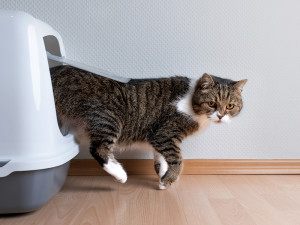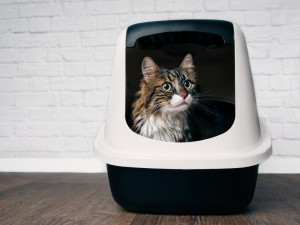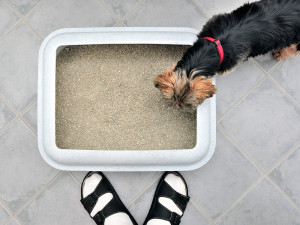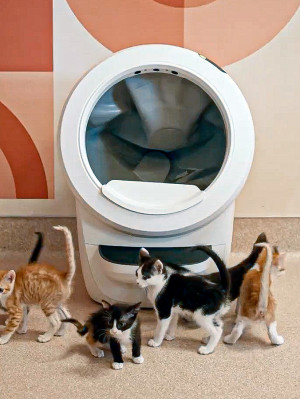Litter-Free Life: A Complete Guide to Toilet Training Your Cat
Say goodbye to litter boxes... Here’s how to toilet-train your cat for a cleaner, greener home
Ever worried about whether your house smells like cats? Litter boxes might be tucked in every corner, but the evidence – paw prints on furniture, stray litter on surfaces – often lingers. But what if you could teach your cat to use the toilet? Imagine a world with no litter box smell, no heavy litter bags and no mess on the floor. Training your cat to use the toilet isn’t for every feline, but for curious, adaptable cats, it might just be possible. Here’s everything you need to know about toilet training your cat.
Can any cat learn how to use the toilet?
Is training your cat to use the toilet something every feline can do, or are there certain temperament traits that might mean they will make good kitty students? Some would say with patience, persistence and reward it may be possible to train any cat. However, cats that show adaptability, curiosity and a strong desire to please their human companions are the leading candidates in this area. Here are some cat breeds that are typically more receptive to the idea of toilet training:
Siamese: Siamese are highly intelligent, curious and social, and thrive on human interaction that puts them in first place as the breed that could easily pick up on tasks like toilet training. Thriving on human interaction they will be motivated to please you and (hopefully) follow your instructions.
Bengal: Bengals are often seen as the smart ones of the bunch and are also athletic in build, so climbing onto a toilet may be less intimidating for them. Being adventurous and inquisitive, they would see the challenge as fun so they sit a close second on my list.
Abyssinian: Abyssinians are quick learners and enjoy mental stimulation which would make them more open to the idea, too. They are seen as playful and love exploring new experiences so make a good candidate at number three.
Other social, affectionate breeds such as Ragdolls, Maine Coons and Burmese also like to interact with their humans, so therefore would engage with constant positive reinforcement.
While breed can play a role in how easily a cat can be trained it’s important to remember that each cat is an individual and we must be mindful of that. The age of the cat will also be significant as well as whether they might have any medical conditions that might mean it is not feasible. For example, a cat with arthritis may struggle to climb, and one with diabetes might need to use the toilet too frequently. Always consider your cat’s well-being first.
How to toilet train your cat: a step-by-step guide
Toilet training your cat takes patience, consistency and a gradual approach. By following these easy steps, you’ll help your cat make a smooth transition from litter box to ceramic throne, one stage at a time. Here’s how to get started:
Move the litter tray near the toilet
Over several days, gradually move your cat’s litter box closer to the bathroom where the toilet is located.
Elevate the litter tray
Once you have got your cat using the tray near to the toilet, start to slowly raise the box using boxes or a small step stool. The aim is to get it to the same height as the toilet over the space of a week or two. Make sure the surface is sturdy – if the tray topples off, it could be game over.
Move the tray to the toilet seat
When you feel your cat is comfortable with the elevated tray, you can now place it on top of the toilet seat.
Replace the tray with a training seat
Believe it or not, there are specially designed toilet training kits for cats (such as the Litter Kwitteropens in new tab). These actually fit over the toilet seat and have a small bowl or tray that holds the litter, effectively your cat is now using the toilet but still with litter.
Gradually reduce the litter
Over time, you can start to reduce the amount of litter in the training seat and begin cutting a small hole in the middle. Gradually increase the size of the hole so your cat becomes accustomed to using the toilet without litter.
Remove the training seat
Once your cat is using the toilet with a hole, you can remove the training seat completely.
Tips for successfully toilet training your cat
Be patient – always go at your cat’s pace and never rush the training. The recommended guidelines state that full toilet training can take 8–12 weeks, so don’t rush it - allow them time to adjust.
Always reward – be sure to reward your cat with treats or praise whenever they use the toilet. A cat will always be more likely to repeat a behaviour if it has received a positive outcome.
Keep it clean – cats can be very particular about cleanliness and may not wish to use the toilet if it is dirty. Regular flushing is important, especially if the toilet is being shared by us (and your cat probably can’t use the flush).
Keep it accessible – always be vigilant that the door has not been closed or the cat can’t physically access the toilet.
Pros and cons of training your cat to use the toilet
There’s a lot to be said about no more stinky litter trays and litter being trodden through your house. Toilet training your cat is an eco-friendly approach, and will be much cheaper and labour-saving for you in the long run. However, some cats may never take to the idea and may frequently have accidents in other places that may then lead to problem behaviour around house soiling and the training is time consuming.
What if it doesn’t work out?
For some cats, toilet training just may not ever come together – and that is OK. It’s essential to consider your cat’s physical and emotional needs. If toilet training isn’t suitable, a well-kept litter box in a quiet, accessible spot is often the best choice.








